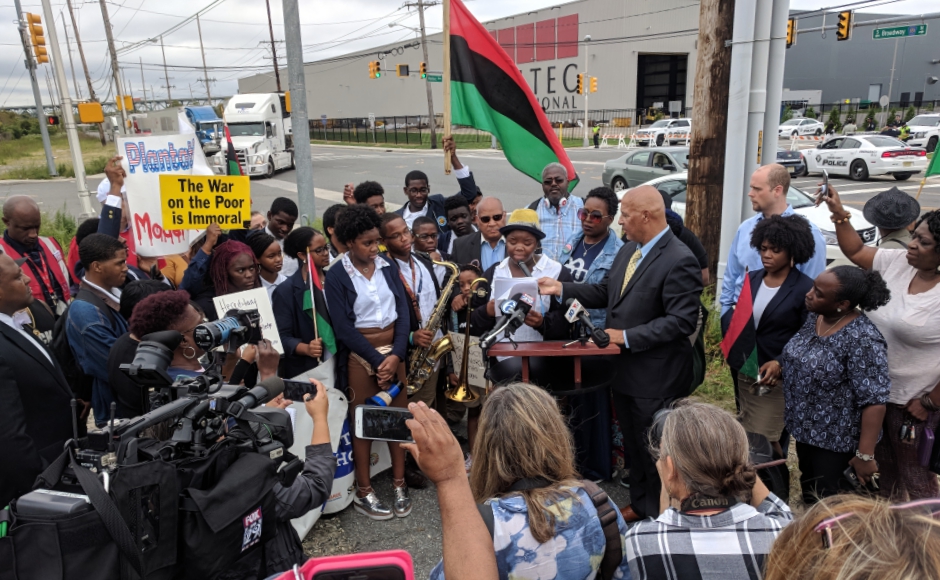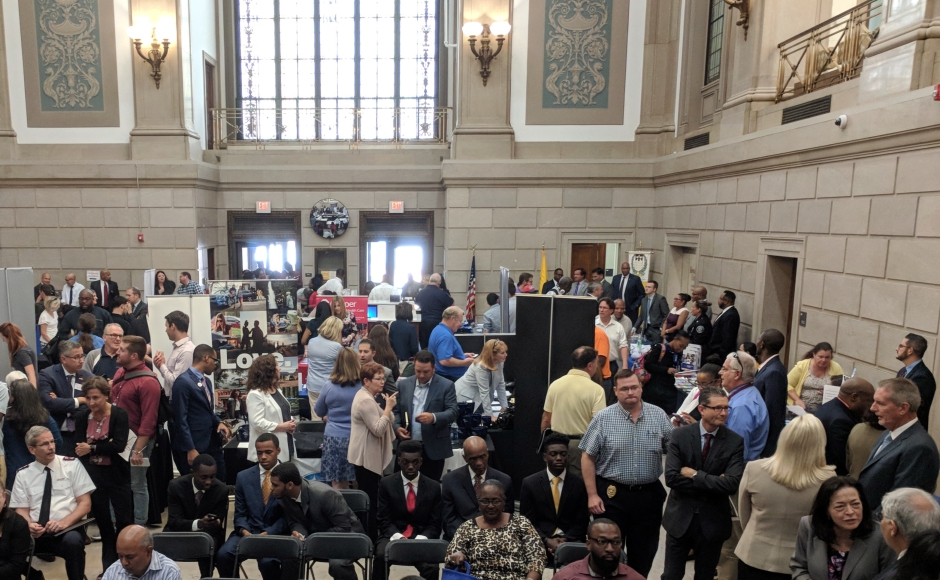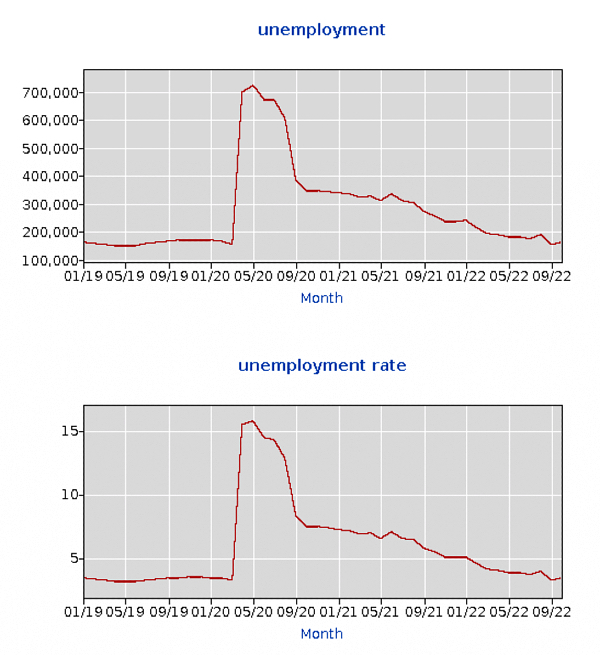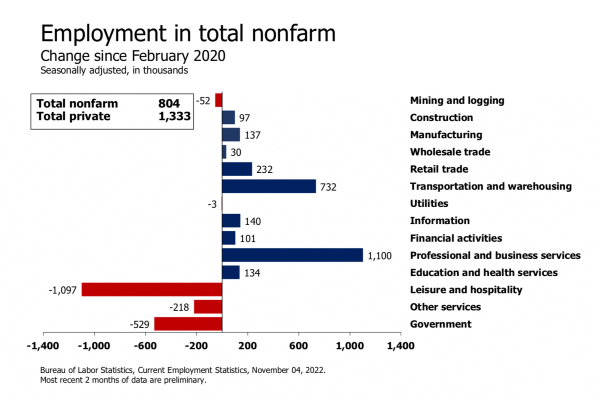In analyzing what’s behind the economic gains, it’s difficult to point to any one set of policies that may be responsible for the turnaround.
By Matt Skoufalos | November 22, 2022
After charting historic joblessness during the early stages of the novel coronavirus (COVID-19) pandemic, unemployment in South Jersey reached a historic low by the end of September 2022, signaling to some local leaders that the regional economy is on the rebound.
Unemployment in New Jersey peaked in May 2020 at a height of 15.8 percent, or 724,973 people, according to data provided by the U.S. Bureau of Labor Statistics (BLS).
From April to August 2020, New Jersey unemployment rates lingered in double digits before finally receding to 8.3 percent (379,740 people) in September 2020.
By September 2022, they had fallen to 3.3 percent (154,119 people), a level unseen since March 2020 (154,311 people), and just a hair off from historic lows of 3.2 percent from April to June 2019 (148,806 to 150,606 people).
Across the state, 21 individual counties outperformed the statewide average on a percentage basis in September 2022, netting unemployment rates of 3 percent or lower. Among them was Camden County, where only some 8,300 people (3.0 percent) of a labor force of 270,700 were out of work that month.
Camden County government officials were quick to tout those returns Tuesday, citing the “lowest unemployment rates in the history of record keeping” for both Camden County and Camden City.
“According to the state LWD report from Nov. 2, Camden City’s unemployment rate fell to 5.5 percent while the county’s fell to 3 percent in September of 2022,” the county government wrote in a statement. “In July of 2020, during the height of the pandemic, the unemployment rate was 22 percent for the city and 16.2 percent for the county.”
By comparison, national unemployment rates have held steadily “in a narrow range of 3.5 percent to 3.7 percent since March [2022],” according to the November 4 BLS Employment Situation Summary. Since February 2020, the country has seen job gains in several sectors, with the exclusion of a few key categories. Work in the leisure and hospitality, other service industries, mining and logging, and government sectors has yet to recover to pre-pandemic levels.
Camden County Commissioner-Director Lou Cappelli cited some $40 million in state and federal assistance for business owners as having been critical to keeping workers employed during the worst of the pandemic.
“Without that assistance, we would not be looking at unemployment numbers like we have today,” Cappelli said. “That was crucial to keeping businesses alive. Those businesses are not only alive, but they’re expanding.”
The Commissioner-Director said that some 40 Camden County businesses have expanded in the past year, including healthcare institutions like Jefferson, Virtua, and Cooper; however, he added that he believes “it’s your mom-and-pop small businesses that have led the way.”
Cappelli also cited a strong local workforce as being critical to high local employment figures and future planned economic growth.
He said additional investment in job training also is needed to continue providing the workers that local businesses need to continue growing.
“We continue to do whatever we can to help small business in Camden County,” Cappelli said.
“We’ll do our best to attract new businesses here, and others to expand.”
The Commissioner-Director said he’s also anticipating “a few upcoming developments that will reduce this rate even further,” including two projects in Camden City and another in the county.
“The fact that we have a good workforce is definitely one of the reasons why unemployment numbers have reduced so drastically,” Cappelli said.
“Camden County’s a good place to work and live,” he said. “We have great amenities to encourage people to stay here.”
Although the unemployment forecast shows a state on the path to economic recovery, Peter Chen, senior policy analyst at New Jersey Policy Perspective of Trenton, said that it’s important not to presume that the numbers are reflective of individual policy actions.
For a start, Chen pointed out that New Jersey was among the states hardest hit by job loss during the pandemic, “so there was a lot of recovery that was needed.”
“Sometimes it feels like we’re through the looking glass and people have forgotten that the pandemic was an economic disaster on par with the largest economic disasters you can imagine,” he said. “It hit globalized economies like New York and Philadelphia really hard, and we’re fighting the after-effects of that for a long time.”
In general terms, employment is increasing across New Jersey, Chen said, particularly in the demand for wage workers, “especially low-wage workers, who’ve long needed a boost,” he said.

Protesters gathered at the Holtec International campus in 2018 to address its CEO’s remarks about the city’s labor base. Credit: Matt Skoufalos.
“Nationally, we’ve seen a lot of job growth and decline in unemployment overall as more people are seeking jobs and as jobs are paying more,” Chen said.
“I certainly think that New Jersey over the last couple years has caught up and surpassed other states in its unemployment rate, which is more on track with historical trends.”
However, Chen also said those gains were largely on the backs of federal stimulus packages and COVID-19 relief policies that are now exhausted.
The next challenge for the state and national economy will be to face “the effects of real income on spending power,” he said.
“Most of the [American] Rescue Plan money that went to municipalities went to covering gaps in tax revenue and payroll, and tried to make sure people were still employed,” Chen said. “That’s good. That was a huge problem in the Great Recession.
“But since most people also did the same thing, it’s hard to point to that and say, ‘We shored up our unemployment figures because we spent it,’” Chen said. “Shoring up state and local employment was extremely important; moving forward, states and municipalities are going to have to work harder to keep the workers they have.
“Without more nuanced investigation and research into what is causing some of the changes in unemployment, especially when you think about a city like Camden, it’s very hard to say that any one set of development priorities did or didn’t make the difference,” he said.
Another complicating factor that Chen pointed to is the origins of the month-to-month BLS data, which are the results of data surveys of households as well as from small businesses. Although they usually conform to one another, declining response rates have started to show some gaps between the two that makes him question the accuracy of the data.
“Month-over-month data is very noisy,” Chen said. “The error bars on these calculations can be large, especially if you drill down to smaller and smaller data sets. I would be careful using monthly fluctuations on the unemployment rate, especially for small geographies, to tell us what is happening.”

Peter Chen, Senior Policy Analyst, at the Trenton-based New Jersey Policy Perspective. Credit: NJPP.
Unemployment numbers “are the after-effect” of economic policies, including relief packages, Chen said, and therefore he hesitated to conclude that any post-COVID economic development policies are directly responsible for improvements in unemployment figures.
“Declining unemployment rates, especially for a community like Camden City that has faced really difficult economic times, is good,” he said.
“But to say that its decline is specifically related to an economic development policy is very difficult without additional information.
“All this stuff is subject to macroeconomic forces at the state and larger levels, so it’s very hard to say that one strategy at the state or local level is responsible,” Chen said.
“Since [unemployment] is going down for everyone, there may be broader factors at play.”
Camden City resident Ronsha Dickerson said the jobs report is encouraging, but doesn’t necessarily match with conditions on the ground in her community.
Dickerson is an organizer with the Camden We Choose coalition, which this year successfully lobbied for a measure requiring Camden City employers to disclose how many local residents they employ.
She said the work most commonly available to young people in the city is “low-wage jobs in sanitation or janitorial work.”
“It feels good to hear that we’re in a better place,” Dickerson said. “However, when I’m in the community, the jobs offered don’t seem to match what we need to be paid.”
Without job-specific training, Dickerson said that Camden residents won’t be able to fully take advantage of job opportunities in the city, regardless of local corporate expansion.
“There’s no harm in having all these folks coming to Camden saying they want to create opportunities,” Dickerson said. “Until we see the corporations here in our high schools, helping seniors coming out, saying, ‘We have great jobs, stay in this city, we will employ you,’ the residents of Camden are not getting jobs that are going to help them survive in the city they live in.”






